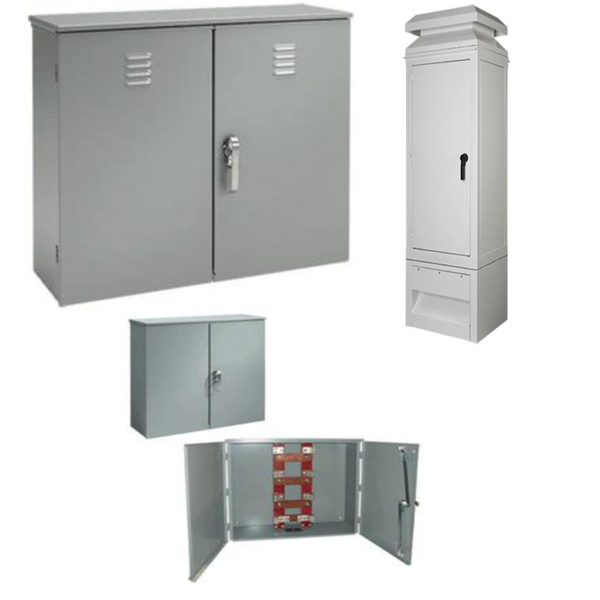nVent Hoffman Commercial Boxes and Enclosures

RSP Supply carries a full line of nVent Hoffman commercial boxes and enclosures designed for reliable protection of electrical and low-voltage systems in commercial and light industrial environments. These enclosures include junction boxes, wall-mounted and pad-mounted enclosures, as well as utility cabinets and splitters, all built to safeguard wiring, connections, and electrical components from environmental damage and unauthorized access.
Junction boxes provide a secure housing for one or more wiring connections. Available in both plastic (ABS or polycarbonate) and metal (stainless steel or aluminum), they are engineered to protect against moisture, dust, and impact. Plastic junction boxes are ideal for non-metallic cable systems, offering UV and temperature resistance, while metal junction boxes are commonly used for grounded conduit systems. Most feature pre-cut cable entries, hinged covers, and mounting options for wall or pad installation.
Wall-mounted and pad-mounted enclosures are used to protect drives, controls, and power distribution components from environmental factors. These enclosures are available in multiple materials and include key and padlocking options for enhanced security.
Utility cabinets and splitters from nVent Hoffman meet stringent local utility and Canadian standards. Designed for outdoor and service applications, these cabinets include CT enclosures and terminal boxes that provide safe, compliant housing for transformers, branch circuits, and metering components.
FAQs
Q: What materials are nVent Hoffman junction boxes available in?
They are available in ABS, polycarbonate, stainless steel, and aluminum; each chosen for durability, impact resistance, and suitability to the installation environment.
Q: Can Hoffman enclosures be mounted outdoors?
Yes. Many Hoffman commercial enclosures are NEMA-rated for outdoor installation, offering protection against dust, moisture, and corrosion.
Q: What are utility cabinets and splitters used for?
Utility cabinets and splitters house and protect instrument transformers, branch circuits, and metering components in compliance with local utility standards.
Q: Are Hoffman commercial boxes suitable for both metal and non-metallic cables?
Yes. Plastic models are suited for non-metallic cables, while metal enclosures accommodate grounded metal conduit and sheathed cable systems.
Q: Do Hoffman enclosures come with locking options?
Yes. Many models include padlock or key-locking systems to enhance security and prevent unauthorized access.
Why Buy nVent Hoffman Commercial Boxes and Enclosures from RSP Supply
RSP Supply offers a complete selection of nVent Hoffman commercial boxes and enclosures with fast shipping, competitive pricing, and expert technical support. Our specialists can help match the right Hoffman solution to your project’s environmental, electrical, and compliance requirements. Whether you need junction boxes, control enclosures, or certified utility cabinets, RSP Supply ensures you get the best protection and performance for your commercial and light industrial applications.

